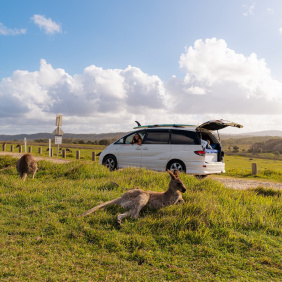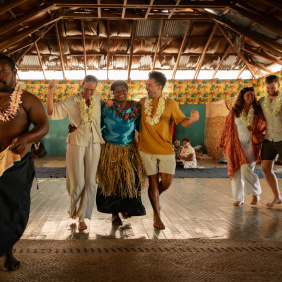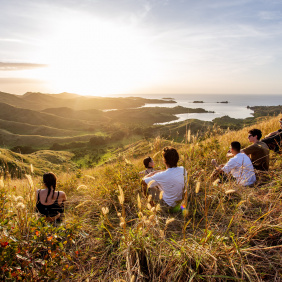About Ningaloo Reef
Located in the north west of Western Australia, Ningaloo Reef is the largest fringing coral reef in Australia supporting over 50% of all coral life in the Indian Ocean. The reef is a staggering 260km long and the only reef in the world to be located so close to a landmass, within half a kilometre at some places in Coral Bay. Ningaloo comes from the Aboriginal Wajarri language meaning “deep water”.
The southern part of the reef can be accessed from Carnarvan, this coastal town produces 80% of Western Australia’s total fruit and vegetables and has a booming crab, scallop, prawn and fishing industry. North of Carnarvan is Coral Bay, a laid-back seaside destination with white sands, clear waters and coral reef metres from the shore. This pristine paradise is also home to Western Australia’s biggest population of Manta Rays that you can swim with.
The northern section of the reef is accessible from Exmouth, a town full of palm trees, rugged coastline and bold emus! It also boasts one of the top ten dives worldwide, a truly unique experience diving underneath the Navy Pier, prestigious for the phenomenal quantity and variety of marine life including the weird but wonderful Wobbegong Shark, Lion Fish and Moray Eel.
Ningaloo Things to do and Marine Life:
- 6 species of toothed whales
- 8 species of baleen whales
- 3 species of dolphin
- 4 species of turtles
- 2 species of manta rays
- 250 species of coral
- 500 species of fish
In recent years new species of sponges have been found in the depths of Ningaloo, including previously thought to be extinct species of seas snakes. The beaches also provide important breeding grounds for several species of turtles.
Ningaloo Reef Tours
There are a number of once-in-a-lifetime experiences to be had at Ningaloo Reef with a huge amount of megafauna choosing to return time and time again to this underwater paradise. Many Manta Rays permanently reside on the reef with a boom in population occurring between May and September. Swim with whale sharks which feed on the reef from March to June or join the migrating humpback whales between August and October, these peaceful and curious gentle giants often approach swimmers creating unforgettable memories.
Ningaloo Reef travel itinerary and things to do:
- Visit Canarvon’s Space and Technology Centre
- View the coral gardens from a glass bottom boat
- Explore Exmouth’s Ningaloo Aquarium and Discovery Centre
- Take an eco-cruise along the oasis of Yardie Creek
- Sink your teeth into a delicious Aussie pie at Coral Resort Bakery
- Head to Bill’s Bay at 3:30pm for the daily Snapper Feeding
- Watch the sun set from the Vlamingh Head Lighthouse
- Hike through the incredible Shothole Canyon
- Visit the Jurabi Turtle Centre
Frequently Asked Questions
Are there many jellyfish at Ningaloo Reef?
There is no serious concern about stingers, many seasons can pass with no recorded stings, compared to the Great Barrier Reef, the risk of being stung by a jellyfish is much lower in Ningaloo.
What are diving conditions like?
The incredibly calm current and shallow reef make for an easy diving experience with visibility varying from moderate at Exmouth to crystal clear at Coral Bay.
When is the best time to visit?
There is something to see and do at any time of the year here, the busiest months tend to be during the Easter and July holiday periods which can result in tours being fully booked. Make sure you book in advance for these months or alternatively visit the reef in the months surrounding the holidays from March to October.
Are whale sharks and humpbacks dangerous to humans?
Neither species have any teeth and do not see humans as food, feeding on plankton, krill and small fish instead. However, these are still gigantic animals and need to be given their space so as to avoid a flailing flipper or tail.
Looking for other travel ideas in Western Australia? Check out our Kimberley Tours.


